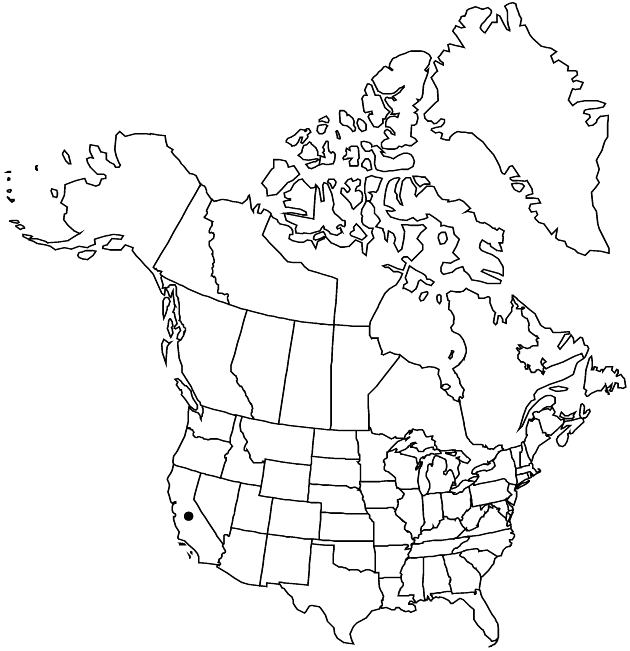Packera ionophylla
Phytologia 49: 47. 1981.
Perennials, 15–30+ cm; taprooted (caudices erect) or rhizomatous (rhizomes branched). Stems usually 1, rarely 2–3, clustered, irregularly arachnoid-tomentose to lanate-tomentose or glabrescent. Basal leaves (and proximal cauline, relatively turgid) petiolate; blades broadly ovate or lyrate (± pinnately lobed, lateral lobes 1–3 pairs, smaller than terminals), 10–30+ × 10–20+ mm, bases tapering to cuneate, ultimate margins subentire or crenate to coarsely dentate (abaxial faces tomentose). Cauline leaves gradually reduced (sessile; bractlike, entire). Heads 3–6 in cymiform arrays. Peduncles bracteate, irregularly tomentose. Calyculi inconspicuous. Phyllaries (8–) 13 or 21, green, 7–10+ mm, densely tomentose proximally, glabrescent distally (tips hair-tufted). Ray-florets 8–13; corolla laminae 8–10 mm. Disc-florets 60–75+; corolla-tubes 2.5–4 mm, limbs 3.5–5 mm. Cypselae 2–2.5 mm, glabrous; pappi 5–7 mm. 2n = 46.
Phenology: Flowering early Jun–late Aug.
Habitat: Dry, rocky slopes, crevices, granitic outcrops, coniferous woodlands
Elevation: 1400–3000 m
Discussion
Of conservation concern.
Packera ionophylla is known only from the San Bernardino, San Gabriel, and Tehachapi mountains and a population on Alamo Mountain in eastern Ventura County.
Selected References
None.
